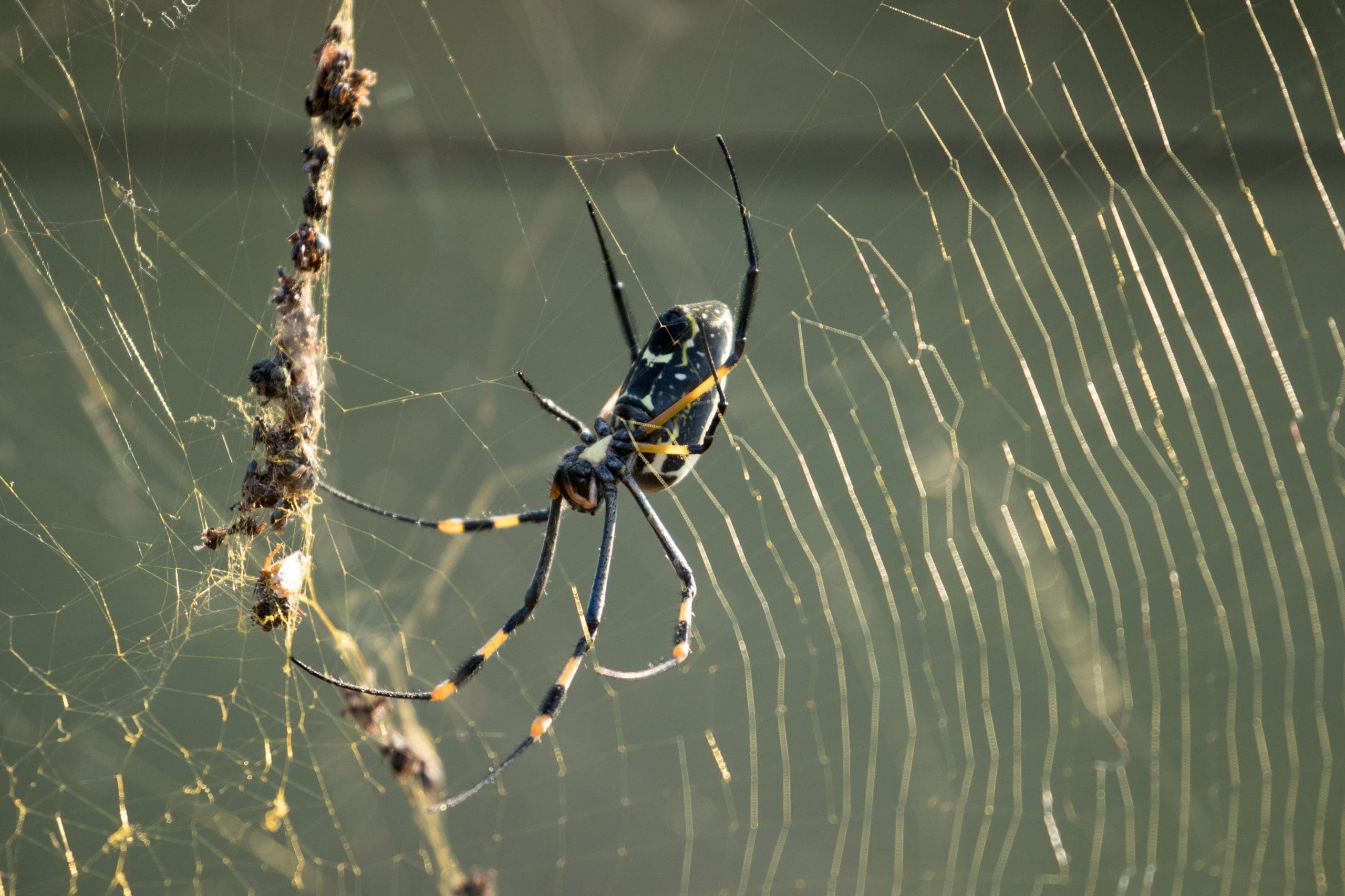Safari goers are often drawn in by the big guys, the ones with fur and tusks, those who move with majesty and grace.
The guides at Garonga Safari Co. we frequently hear cries for the Big Five, but little do these innocent safari adventurers realise that there is a whole menagerie of weird and truly wonderful creatures just waiting to steal the show, the lesser known but no less marvelous Small 5000.

Now 5000 is not a precise species count and were we to start counting 5000 would be laughably short of the mark. So read on to enjoy a small window into a couple of the lesser seen highlights. Be warned, life in the wild, in this case the Great Makalali Private Game Reserve, is not for the faint of heart, it might not seem like it but these creatures will get your Halloween chills up and running!
Red velvet mites are fascinating creatures. They look, to the untrained eye, a bit like a furry strawberry on legs. These wonders are seldom seen and when they are, they turn the head of even those not typically arthopodically inclined. But, don’t let yourself be fooled, although they appear sweet and fluffy these animals are anything but! As an intrinsic part of their lifecycle, the larvae need to find an insect host, climb onto its back, drill a hole through its exoskeleton and feed on the (still-living) insect’s bodily fluids!
Whilst it is being quietly sucked dry, the insect is still mobile – this is key for the mite’s survival, letting it end up far from where it originally hatched, reducing competition for food and living space. Once it has drunk its dracular-ey fill, the larva will drop off and pupate into a nymph where it transforms into an active predator and preys on every insect it can find!

Once it has fed until sated, the mite enters a dormant stage before transforming into an adult. Intriguingly, the adult is typically a less voracious predator then the nymphal mite, focusing its diet on arthropods and their eggs, and, in this part of the world, they are especially fond of ants and termites.
They spend large periods of the year inactive underground and are typically spotted at the surface again after it rains. In some areas the adult mites may only forage for a few hours per year!

Aside from their carnivorous habits these mites have a romantic side. Their mating rituals are seldom seen but carefully choreographed. First comes the courtship; to become acquainted the mites circle one another tapping with their forelegs.
The male has typically been presumptuous and deposited a spermatophore (a sperm filled parcel) onto a bed of leaves and twigs and laid down a silk trail leading to the prize. When the female has indicated her acceptance of the courting male (which presumably chiefly comprises of not eating him) he leads her down his silken trail and stops when she is positioned directly over the parcel.
The parcel is hooked to her underside and the sperm fertilise her eggs. After mating she can lay as many as 100,000 eggs, enabling the whole cycle to start over again.

Few creatures in life can claim quite as many phobias created as spiders. The next character we explore is the banded legged Nephila. My favourite description of this spider has to be that it is “non-aggressive and relatively harmless”.
A description which is usually followed by the disclaimer that it can deliver a painful bite if “severely provoked”, and the venom is not considered to be serious merely causing redness and blistering (that well-known “harmless” symptom)!
Somehow the accounts never take into consideration the potential that the sight of the spider has to give the unsuspecting discoverer a heart attack through fear alone!

Commonly known as a Golden Orb Web Spider these arachnids are easily recognised by the yellowish colour of their webs. This is believed to serve two (nefarious) purposes. First, it helps the web in shadow, to blend with the surrounding foliage ensnaring unsuspecting insect prey; secondly, and conversely, when in the sun it is thought to attract bees due to their preference for the colour yellow.
The female banded legged nephilas are noticeably larger than their male counterparts who need to remain constantly alert to avoid being eaten by the ladies. Post-coitus cannibalism is common with this species. To avoid coming to a sticky end the males will often distract the females with a food offering or wait until she is consuming a meal before sidling in to fertilise her and then retreating to a safe distance and living to see another dawn!

Come and join us around a fire in the bush to learn more about our spookier residents and their dastardly habits.
Cover Image © Sophie Barrett
